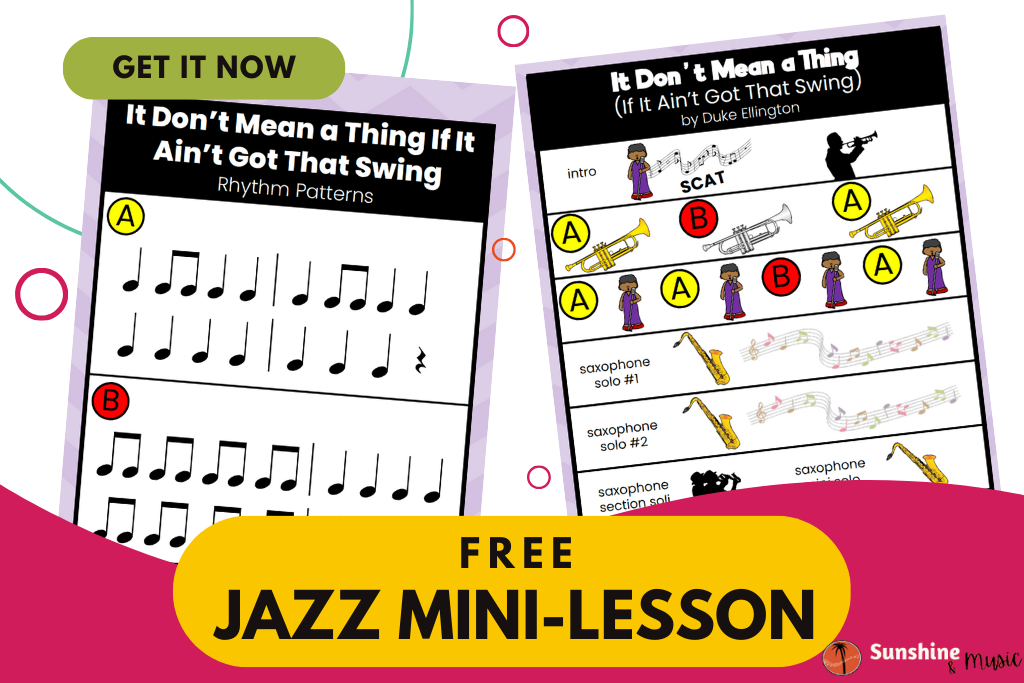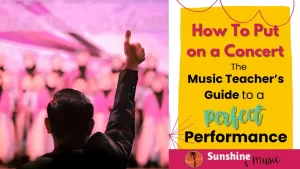If you are looking for authentic music for Black History Month, today I would like to present to you The Othello Suite by Samuel Coleridge-Taylor. This piece is fun and exciting and sure to peak the interest of your students!
Who is Samuel Coleridge-Taylor?
Not to be confused with Samuel Taylor-Coleridge (a famous poet), Samuel Colridge-Taylor was a Black composer in England during the turn of the century. His father was from Sierra Leone and his mother was from England.
Samuel Coleridge-Taylor became interested in music that had roots in his ancestral homeland, such as African American folk songs he heard performed by the Fisk Jubilee singers. He began to incorporate some of these influences into his music.

Some of Coleridge-Taylor’s most famous works include the Song of Hiawatha, African Suite, and the Othello Suite. Today we will explore music from The Othello Suite.
Make sure to take a moment as you are teaching this piece to focus on the composer!
Samuel Coleridge-Taylor Othello Suite
The Othello Suite is based on incidental music written for a performance of Shakespeare’s famous play – Othello.
The piece I am going to focus on is Movement I: Dance.
It starts with a fiery introduction which tempers off into a dance and then finishes with a flourish. The whole piece is vibrant and full of energy.
Othello Suite: Parachute Activity
One of my favorite ways to teach this piece is with a parachute activity.

Parachute activities are a great way to get kids moving as they listen, while still highlighting key elements like form, dynamics, phrasing and more.
The best thing about the Dance Movement from The Othello Suite? It is only about two minutes long, so it is easy to fit into any lesson!
Listen and Analyze the Music
Want to take it to a deeper level? Have your students take a second listen, by themselves or maybe with a partner. They can listen for specific elements or describe how the piece makes them feel and why. I always like to have my students cite specific examples from the music to back up their argument (which lines up well with some of their standards in other subjects).
For example, they might say this song makes me feel excited because it has a fast tempo and sudden dynamic changes. It helps them make use of their vocabulary knowledge and actually think critically about WHY music makes them feel the way it does.
You can learn more about taking a deep dive into analyzing a piece of music in this blog post about How to do a Close Read in Music Class
More Blog Posts for Black History Month
Teaching the Music of Scott Joplin
The Music of the Harlem Renaissance – and a free lesson for your classroom!









3 Responses
Dear Erin,
I’m a PreK music teacher, trained as a general music teacher 25 years ago but I have primarily been leading a different project and enjoying returning to general music at this level. Help! I need piano accompaniment sheet music for “Sing About Martin” because the children love this song sooo much when I taught it to them in Jan/Feb. I just literally browsed my way into your beautiful website and it is soooo interesting and packed with ideas. I am rushing now and will be touring all your material at a later time but I would sure love to get my hands on a great piano accompaniment that I could maybe even add some rhythm sticks for the PreK teachers to join in while the children sing and sign the song. They will be doing a little PreK showcase and singing three other songs but this would top things off for them. Thanks in advance!
Hello Moyna! I am so glad you are enjoying the site. Unfortunately, I do not have a piano accompaniment to point you to for this song. But it is a pretty simple song. I am sure you could create your own and it would work great!